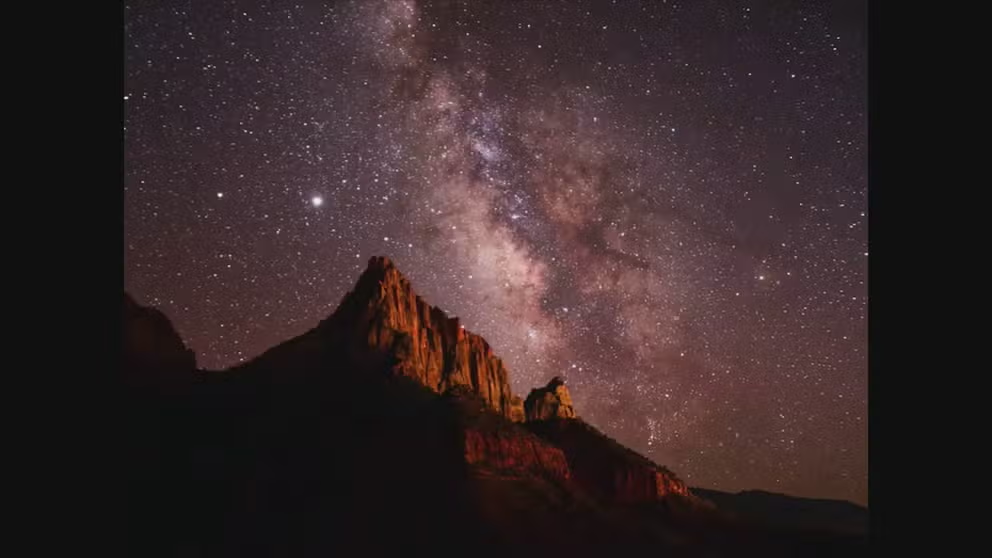When you can see the Milky Way Galaxy this summer without a telescope
A combination of location, timing and the weather can help create ideal conditions for seeing the Milky Way.
Watch: Timelapse of Milky Way over Zion National Park
Park Ranger Avery Sloss created this timelapse video of the Milky Way above Watchman Mountain in Zion National Park. Zion was certified an International Dark Sky Place by the International Dark Sky Association in 2021.
Containing dust, planets and an estimated 100 billion stars, our Milky Way Galaxy will be putting on a show at times this summer such that it can be seen with the naked eye from certain parts of the U.S.
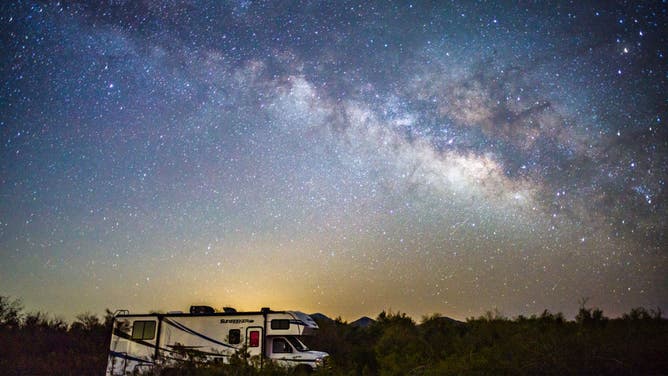
BLM Land boondock camping with milky way. (Photo by: Edwin Remsberg/VW Pics/Universal Images Group via Getty Images)
(Edwin Remsberg/VW Pics/Universal Images Group / Getty Images)
While Americans would be able to see the galaxy sometime from early February to late October, pinpointing the best month for viewing depends on how far north or south a person lives, according to Capture the Atlas:
- For people in Alaska, the best time to see the Milky Way is from the middle of March to the middle of May.
- For people in New York and the northern half of the contiguous U.S., the best time is from late March to late August.
- For people in Florida and other parts of the southern half of the country, the period from late March to late September is the ticket.
HOW THE TELESCOPE BECAME OUR WINDOW INTO THE UNIVERSE
Which part of the month has the best views of the Milky Way?
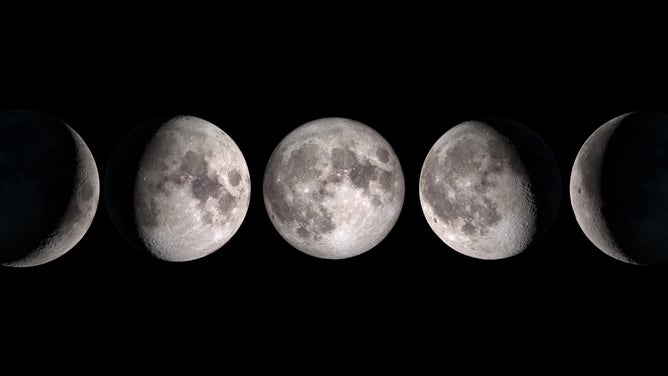
According to NASA, the moon’s complexion cycles between being completely dark and fully lit every 29.5 days. Names like new moon, full moon, waxing crescent and waning gibbous describe its appearance at each stage of this cycle.
(NASA / NASA)
To help narrow down when you can look up and see the Milky Way in full detail, consider when the sky is as dark as possible, specifically regarding the Moon and bright moonlight.
The darkest skies are seen during the New Moon, when the night side of the Moon is facing Earth, essentially erasing moonlight from the night skies, according to NASA. So the best times to spot the Milky Way are the few days before and after the New Moon.
For the rest of this summer, the New Moons are on Aug. 4 and Sept. 2.
WHAT ARE THE PHASES OF THE MOON?
What time will the Milky Way be most visible?
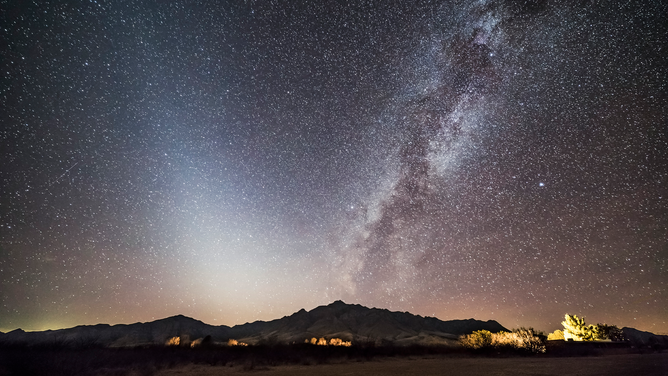
FILE - Depictions of two kinds of dust in space: At left the pyramid-shaped glow of Zodiacal Light caused by sunlight reflecting off interplanetary dust in the inner solar system from comets and meteoroids, while at right is the band of the bright Milky Way, made of stars in our galaxy But along it lie dark lanes of interstellar dust made of carbon compounds made in the atmospheres of stars and dispersed into the Galaxy.
(Alan Dyer/VW Pics/UIG / Getty Images)
Skygazers will either need to stay up late or wake up early to catch the best glimpse of our galaxy.
Capture the Atlas said the peak viewing times are between midnight and 5 a.m. local time.
Where is the best place to see the Milky Way?
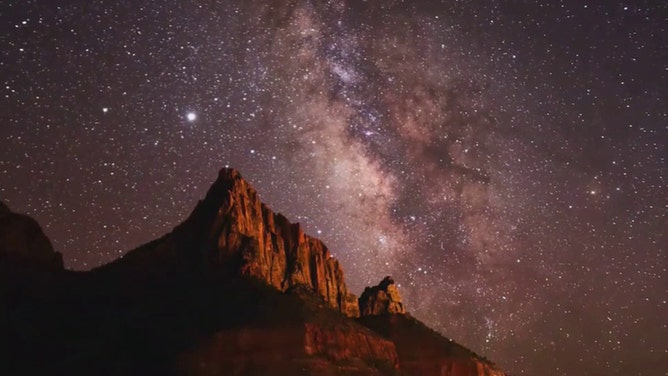
Stunning timelapse footage showing the Milky Way in the night sky at Zion National Park, Utah, was posted to Facebook by the US Department of Interior on May 17.
(US Department of the Interior / FOX Weather)
Dark skies create ideal conditions for seeing our galaxy. That means skygazers need to go where little to no light pollution can block their view.
For example, many national parks provide visitors with opportunities to see the night sky without being obstructed by the intrusive glow of city lights.
Also, areas where the sky is as cloud-free as possible are ideal for viewing the Milky Way.
To find out whether your location is cloud-free, download the free FOX Weather app on your phone.
